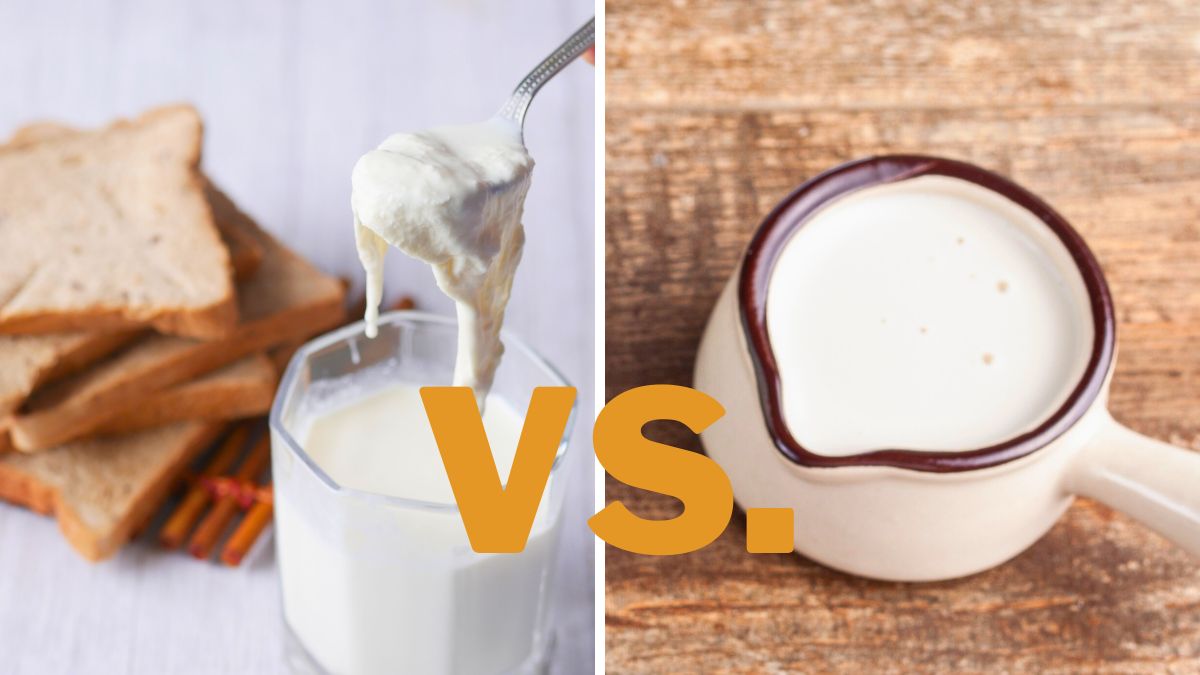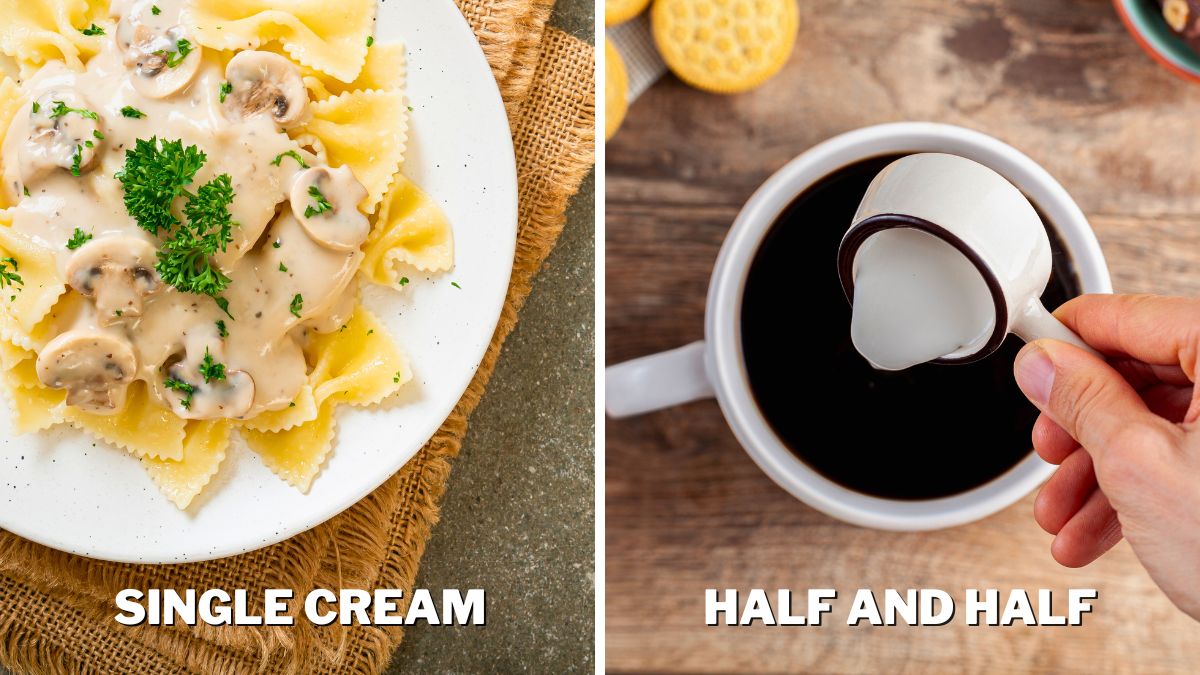Single Cream vs. Half and Half: Differences & Uses

A few friends of mine wanted to learn to make desserts, so they asked me to help them, and we made it a group lesson. What caught my attention was that none of them knew the difference between single cream and half and half, which is crucial in dessert-making. From their comments, I realized that they are not the only ones who don’t know the differences, so I decided to do some research and give you all some main pointers.
Generally, single cream has a fat content of 18% to 20%, which makes it a common ingredient in cooking, baking, and dessert-making. On the other hand, half and half is a lighter option and is commonly used as a coffee or tea creamer.
This means that while using single cream in your coffee won’t do much damage, except giving a fattier coffee, using half and half in your dessert will definitely ruin it. Below, you can find out about the differences between half and half and single cream so you know how to use each to your best advantage, and you can find a table summary at the very end. Let’s get started, shall we?
What Is Single Cream?
Single cream, also known as light cream, table cream, or pouring cream, is a dairy product with a fat content of 18% to 20%. Even though I prefer my desserts with double cream and my savory meals with heavy cream, it does a decent job when I am out of both. [1]
Single cream is generally a common ingredient in cooking and baking, especially among those who prefer lighter desserts because it has a creamy texture and mild flavor. For savory meals, you can use a single cream as a sauce.
What Is Half and Half?
Half and half, sometimes called half cream, is a dairy product that is actually a mixture of equal parts milk and light cream. Its fat content ranges from around 10 to 12%, and it is significantly thinner than single cream. It doesn’t have a wide application in cooking, but if you want, you can add to some recipes where you think it would fit. [2]
I sometimes add it to soups to add creaminess or sauces that aren’t supposed to be too thick. It is best known as a coffee or tea creamer.
Comparing Single Cream and Half And Half
We’re talking about two completely different types of cream here. The main difference lies in their fat content, which further brings the differences in their applications and the rest of their characteristics. So, take a look below and see in which aspects they differ so that you know how to use them properly.
Similar in Mildness, but with a Crucial Difference in Taste
When it comes to their tastes, both single cream and half and half are very mild and don’t have any explosive flavor notes. Their intention isn’t to change the flavor but to affect the structure and perhaps amplify the surrounding flavor notes.
Still, they are buttery and have a slight milky note, which is why they are so widely used as creamers and thickeners.
Single cream has a richer and creamier taste, which is to be expected since it is the fattier one. Honestly, I prefer single cream over half and half for cooking because it offers a soft and silky yet rich note to the dish.
Half and half is the milder one and isn’t as rich as single cream. It is more milky than creamy due to its lower fat content and doesn’t do all that well in cooking. You can give it a shot in simpler dishes like soups to see how it fits, but I generally don’t recommend it for other purposes except as a coffee or tea creamer.
Use Single Cream in Cooking and Half and Half as Creamer

While both have a wide application in cooking, single cream is the one that is used more and also the one I recommend in cooking. Although there’s no law against it, using half and half in cooking isn’t the best idea since it has a low-fat content, which doesn’t reflect well on the dish.
Now, if you are on a low-fat diet, it might be just the thing for you, but I don’t know how much you would enjoy it. In any case, I would advise you to try it and decide for yourself. Still, I advise against using it in desserts since it is a whole other animal when it comes to culinary disciplines.
So, if the recipe doesn’t call for half and half, either don’t use it all or see if you can up the fat content in any way.
Single cream is the more commonly used one for cooking and pastry-making. It is a lower-fat version of double cream, which allows you to use it in most cases where you would use double cream. It provides richness, creaminess, and butteriness to the dessert, and it is very easy to work with.
It also has a wide application in savory dishes, providing a creamy base for sauces or as a thickener.
So, stick to single cream for general cooking and use half and half as a coffee or tea creamer. If you’re new to cooking, especially baking and desserts, hold off the experiments until you gain more experience.
Popular Substitutes for These Types of Cream
The best substitutes for single cream are heavy cream and double cream. Although they are significantly fattier than single cream, you can add some milk to thin the heavy cream or double cream and bring the consistency of the substitutes as close to the real thing as possible.
Full-fat milk can be a good half and half substitute, as well as milk and heavy cream mixture. Even regular milk can replace half and half if you need it to cream up your drink.
Have you ever used substitutes for these two? If yes, I would love to know which ones, so don’t forget to write it down in the comments below!
| Criteria | Single Cream | Half and Half |
|---|---|---|
| Fat content | 18% to 20% | 10 to 12% |
| Taste | Rich and creamy | Mild |
| Uses | Cooking, baking, topping | Coffee/tea creamer, cooking |
| Popular Substitutes | Heavy cream, double cream | Full-fat milk, regular milk, light cream |
